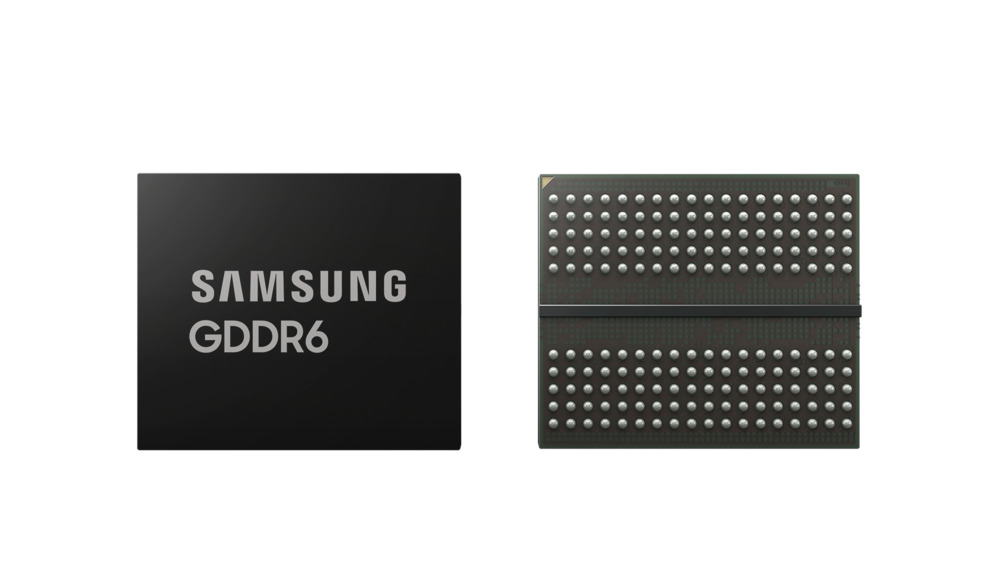If you are a PC enthusiast, you already know how important it is to understand different performance metrics to make an informed decision. Such an important GPU parameter is its memory or VRAM. Just like the CPU RAM comes in different types like DDR5, GPU memory also comes in various types. GDDR6 is one of them, and it is the most recent one. Without further ado, let’s hop in and explore the GDDR6 memory type.
Key Takeaways
- GDDR6 is a memory type widely used in high-end graphics cards. It offers bandwidth speeds in the range of 14 to 16 Gbps.
- GDDR6 offers better performance than its predecessor GDDR5. Whereas it falls slightly short in performance when compared to GDDR6X.
- I will recommend having a GDDR6 memory of at least 8GB in 2023 for smooth operation even at higher resolutions.
What Is GDDR6?

GDDR6 (Graphics Double Data Rate 6)[1] is a type of memory technology[2] commonly used in high-performance graphics cards. Being the successor to GDDR5, it is the most recent iteration of the GPU memory type.
Just like CPU RAM comes in variants like DDR4 and DDR5, GPU memory or VRAM comes in variants like GDDR5, GDDR6, and GDDR6X[3]. GDDR6 memory modules provide fast and efficient data access for graphics-intensive applications, such as gaming, virtual reality, and professional graphics workloads.
GDDR6 vs GDDR6X vs GDDR5
The following table provides you with a comprehensive overview of the three most recent GPU memory types:
| GDDR6 | GDDR6X | GDDR5 |
|---|---|---|
| Successor to the GDDR5 | An advanced iteration of the GDDR6 | Predecessor to the GDDR6 |
| Bandwidth speeds range from 14 to 16 Gbps | Bandwidth speeds range from 19 to 21 Gbps | Bandwidth speeds range from 7 to 8 Gbps |
| Moderately higher power consumption | Moderately higher power consumption | Comparitively lower power consumption |
HBM2 vs GDDR6
The following table will take you through a brief overview of HBM2[4] and GDDR6:
| HBM2 | GDDR6 |
|---|---|
| Uses a 3D-stacked memory design with multiple stacks | Uses a traditional memory design with single stack |
| Generally consumes less power | Moderately higher power consumption |
| Offers significantly higher bandwidth | Offers high bandwidth |
| High price point | Relatively low cost |
How Much GDDR6 Do You Need In 2023?
The amount of GDDR6 memory required in 2023 depends on your specific application and system requirements. For gaming, the memory needed is influenced by factors such as your resolution preferences, graphics complexity[5], and system configuration.
In general, for entry-level or mainstream gaming at 1080p resolution, around 6GB to 8GB of GDDR6 memory is often sufficient. For high-resolution gaming[6] at 1440p or 4K resolution, it is recommended to have 8GB to 12GB or more of GDDR6 memory for better performance.
For graphics-intensive tasks like professional graphics workloads[7], virtual reality, or machine learning[8], larger memory capacities are usually beneficial. In such cases, you should prefer having 8GB to 16GB or more of GDDR6 memory, depending on the specific demands of the tasks at hand.
GDDR6 Bandwidth Speed
The bandwidth speed[9] refers to the rate at which data can be transferred to and from the memory modules. Higher bandwidth allows for faster data access[10] and enables the GPU to efficiently process and render graphics-intensive tasks.
For GDDR6 memory, the bandwidth speed typically ranges from 14 to 16 Gbps. Moreover, GDDR6’s increased bandwidth compared to previous memory technologies, such as GDDR5, contributes to improved overall system performance, particularly in gaming, virtual reality[11], and other graphics-intensive applications.
Final Thoughts
Summing up, high-performance graphics cards commonly utilize GDDR6 as their memory type. Just like the RAM comes in variants like DDR4, the GPU memory comes in variants like GDDR6, HBM2, and more. When compared to GDDR5, GDDR6 offers higher clock speeds and higher bandwidth speeds. Hence, the GDDR6 performs better than the GDDR5.
Additionally, the amount of GDDR6 you need in 2023 depends on several factors. But I will recommend having a GDDR6 of at least 8GB for smooth and uninterrupted gameplay even at higher resolutions.
Related Helpful Resources By Tech4Gamers:
References:
-
- Graphics Double Data Rate (GDDR6) SGRAM Standard. Retrieved from https://www.jedec.org/standards-documents/docs/jesd250d
- Muhammad Amjid. RAM, SDRAM, DRAM And Its Different Types Retrieved from https://www.academia.edu/91458024/_RAM_SDRAM_DRAM_And_Its_Different_Types_DDR1_DDR2_DDR3_DDR4_DDR5_
- MICRON. Micron Innovates GDDR6X Graphics Memory. Retrieved from https://investors.micron.com/news-releases/news-release-details/micron-begins-volume-production-gddr6-high-performance-memory?ReleaseID=1070810
- JEDEC (Mar 2021) HIGH BANDWIDTH MEMORY (HBM) DRAM Retrieved from https://www.jedec.org/document_search?search_api_views_fulltext=jesd235
- Graphical Complexity. Retrieved from https://www.cs.cmu.edu/~sage/Papers/comchar4.html
- Andrew J Sabri, Robert G Bal. (September 2006). Retrieved from https://icarus.cs.weber.edu/~rball/pubs/High-res-gaming.pdf”>https://icarus.cs.weber.edu/~rball/pubs/High-res-gaming.pdf
- GPU Computing Retrieved from https://researchcomputing.princeton.edu/support/knowledge-base/gpu-computing
- Sara Brown (April 21, 2021). Retrieved from https://mitsloan.mit.edu/ideas-made-to-matter/machine-learning-explained
- Memory Bandwidth. Retrieved from https://www.nic.uoregon.edu/~khuck/ts/acumem-report/manual_html/ch_intro_bw.html
- Managing data access. Retrieved from https://www.nic.uoregon.edu/~khuck/ts/acumem-report/manual_html/ch_intro_bw.html
- Virtual Reality and Augmented Reality. Retrieved from https://www.lib.ncsu.edu/do/virtual-reality
FAQs
GDDR6 and DDR4 are two different memory types that are not interlinked with each other. If your motherboard supports DDR4, it does not affect the support of GDDR6. So, yes, you can use a GDDR6 memory module with a DDR4 module if your motherboard has an open PCIe slot and space to accommodate your GDDR6 GPU.
For installing a GPU, all you need is the latest PCIe x16 slot. Your motherboard does not depend on the generation of GPU memory you are using. So, as long as you have the latest PCIe slot, your motherboard will run your GDDR6 GPU even if it was running a GDDR5 previously.
The bandwidth speed of GDDR6 is almost double of GDDR5. Therefore, a GDDR6 GPU will generally offer better performance than a GDDR5 GPU of the same memory size.
Thank you! Please share your positive feedback. 🔋
How could we improve this post? Please Help us. 😔
[Wiki Editor]
Ali Rashid Khan is an avid gamer, hardware enthusiast, photographer, and devoted litterateur with a period of experience spanning more than 14 years. Sporting a specialization with regards to the latest tech in flagship phones, gaming laptops, and top-of-the-line PCs, Ali is known for consistently presenting the most detailed objective perspective on all types of gaming products, ranging from the Best Motherboards, CPU Coolers, RAM kits, GPUs, and PSUs amongst numerous other peripherals. When he’s not busy writing, you’ll find Ali meddling with mechanical keyboards, indulging in vehicular racing, or professionally competing worldwide with fellow mind-sport athletes in Scrabble at an international level. Currently speaking, Ali has completed his A-Level GCEs with plans to go into either Allopathic Medicine or Business Studies, or who knows, perhaps a full-time dedicated technological journalist.
Get In Touch: alirashid@tech4gamers.com


 Threads
Threads
![Power Supply 80+ Certification [Explained] be quiet! Dark Power Pro 80 Plus Titanium Branding](https://tech4gamers.com/wp-content/uploads/2024/05/be-quiet-Dark-Power-Pro-80-Plus-Titanium-Branding-218x150.jpg)
![What Is CFM In Fans? [Importance, Ideal CFM, Static Pressure]](https://tech4gamers.com/wp-content/uploads/2023/08/What-is-CFM-Explained-218x150.jpg)
![How Often Should I Clean My PC? [Full Guide] HOW OFTEN SHOULD I CLEAN MY PC](https://tech4gamers.com/wp-content/uploads/2023/02/HOW-OFTEN-SHOULD-I-CLEAM-MY-PC-218x150.jpg)
![CPU Cooler Heat Pipes [What, Why, & How]](https://tech4gamers.com/wp-content/uploads/2023/09/HOW-TO-9-218x150.jpg)